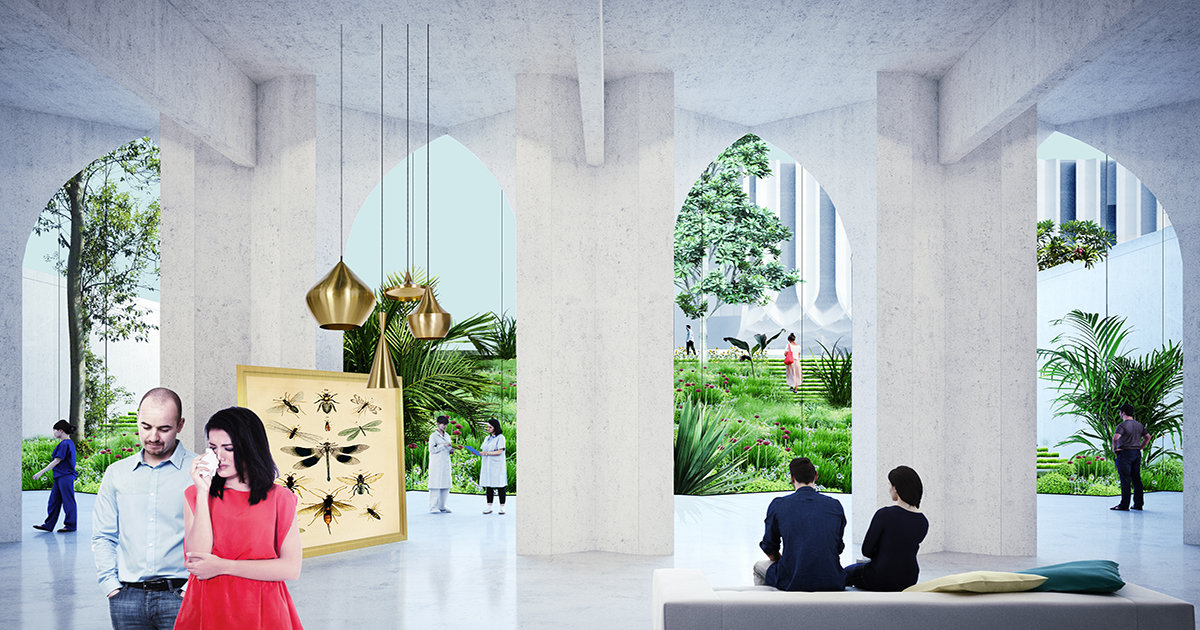
UMC Ljubljana became a milestone of future hospital construction by the construction of diagnostic and therapeutic service facility not only in Slovenia but also in the entire Yugoslavia of that time.
Professor Kristl not only managed to solve successfully all the set medical-functional demands of that time. In addition, he managed to give a touch of something more to the facility, enrich it, and, with a great feeling of responsibility, transform it into the investment which even today, after more than 40years, represents a great value to the investors and to us, users, as well.
The confusion which takes place in this area today is the responsibility of the people who did not understand the basic idea of the parent facility; on the latter, bed facilities are attached as magnets. Thus the ministries invite to tenders with basically wrong initial conditions. I wish only that we all stop for a moment and take a look at the area of the UMC Ljubljana of today. I firmly believe that we all possess such amount of ethics that we cannot be indifferent. We cannot be indifferent about the space, where we walk and which is being violated with every wrong intervention. We cannot be indifferent about the personnel whose walking is too long due to dysfunctional concepts. We cannot be indifferent about the patients, when they lie in their beds helpless and diseased without any view into the exterior. We cannot be indifferent about the patients who seek a shadow of a tree in space, a flagrant plant, but they find nothing.
University Medical Centre Ljubljana unites the most important medical institutions in the country of Slovenia. In the master’s thesis, an original design of the hospital area and the building of the UMC, designed by the architect Stanko Kristl, and their development to this day are presented.
The design of Kristl’s building derives from the demands of the medical activity. In addition, it expresses modernistic ideas on the humane and hygienic environment for medical treatment. The main building of the Medical center–DTS is an example of an exceptional architectural designing.
The thesis answers the essential questions: How to lead the development of the UMC area reasonably? How to arrange the entire area in an urban manner? How to shape the individual buildings? How to follow Kristl’s idea of hospitals in a large and in a small scale? And, last but not least, is this location still appropriate for spreading the complex of hospitals?
The thesis thus discusses the urban strategy of the development of the entire area. In nine phases, it also proposes quite a radical emptying of the UMC area and proposes a new design which connects to the original idea of the architect Kristl. The thesis is supplemented by the project of a building of one of the hospitals. The significance of integrity and clear spatial design is emphasized in the thesis. The latter is missing in today’s clinical area. The thesis clearly forms the demands, which should be met by the UMC as a hospital of the future.